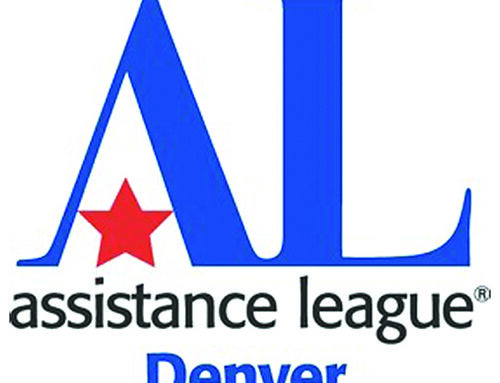Governor Polis Signs Roadside Safety Law, Now Among Nation’s Strongest
 It’s official: Colorado Governor Jared Polis has signed into law a new measure that will save lives at the roadside — with Colorado joining the ranks of just nine other states in offering robust “Slow Down, Move Over” protections to all disabled vehicles.
It’s official: Colorado Governor Jared Polis has signed into law a new measure that will save lives at the roadside — with Colorado joining the ranks of just nine other states in offering robust “Slow Down, Move Over” protections to all disabled vehicles.
HB23-1123 requires that drivers move over a lane whenever they encounter any stationary vehicle with its hazards flashing — and if they can’t move over, they must slow down. The new protections will take effect in August, and they come as 2022 marked the deadliest year on Colorado roads since 1981. On Monday, a Colorado State Patrol trooper in El Paso County went to the hospital after a driver struck the patrol vehicle at the roadside — the seventh such crash this year.
“One thing is clear: Drivers ignore ‘Slow Down, Move Over’ laws because they don’t know about them or they just don’t understand them,” said Skyler McKinley, regional director of public affairs for AAA. “This new law is powerfully clear: Coloradans have a responsibility to protect everybody at the roadside, from law enforcement to tow truck technicians, to drivers like you and me. With this measure, we’ll get that message out — and it will save lives.”
The roadside’s inherent dangers are why, according to research from the Centers for Disease Control and Prevention, motor vehicle towing is one of country’s deadliest lines of work — with a death rate 15 times more than that of every other private industry combined. On average, nearly 350 people across the country are struck and killed every year while outside a disabled vehicle.
Last fall, AAA presented, and former Rep. Kurt Huffman (R – Highlands Ranch) proposed this measure to the Colorado General Assembly’s Transportation Legislation Review Committee as part of the launch of AAA’s 14-state “Move Over for Me” campaign. Upon introduction this year, it won the support of the Colorado State Patrol, the Colorado Rural Electric Association, Colorado Springs Utilities, the Denver Regional Council of Governments, the Colorado Association of Municipal Utilities, the Colorado Motor Carriers Association, and the Cities of Aurora and Colorado Springs, among other key safety leaders.
The bill, sponsored by Rep. Mandy Lindsay (D – Aurora), Rep. Ron Weinberg (R – Loveland), Sen. Janice Rich (R – Grand Junction), and Sen. Jeff Bridges (D – Greenwood Village), won broad bipartisan support — and passed unanimously out of the Colorado State Senate. Alongside bills passed with AAA’s support in 2017 and 2019, Colorado’s “Slow Down, Move Over” laws are now among the nation’s strongest.
“Anybody who’s ever suffered a breakdown at the roadside will tell you just how scary it can be waiting for help as traffic whips by at highway speeds just inches away,” McKinley said. “This law takes a big step for traffic safety equity by making sure Coloradans look out for one another. That’s always been the right thing to do, and we’re grateful it’s now the law, too.”
To get the word out about the need to slow down and move over and this new law, AAA plans to expand its “Move Over for Me” campaign in Colorado communities. Learn more at AAA.com/Slow DownMoveOver.
AAA’s Tips To Protect Roadside Workers And Stranded Motorists
For Drivers:
- Remain alert. Avoid distractions and focus on driving.
- Emergencies can occur anywhere on the road. When you see flashing lights of any color, slow down and prepare well in advance to change lanes. Allow others to merge into your lane when necessary.
- If you are unable to move at least one lane away from the stationary vehicle, you must slow down to at least 25 miles per hour on roadways with a speed limit below 45 miles per hour. On roadways with speed limits 45 miles per hour or more, you must slow down to 20 miles per hour less than the speed limit.
- Give yourself extra space when following semi-trucks or large vehicles. If a truck moves into a left-hand lane, don’t speed around the right side. They are changing lanes for a reason. Be prepared to change lanes yourself.
- When road conditions are slick, don’t make sudden lane changes that can cause an uncontrollable skid. Change lanes early and move over gradually.
- Be a good passenger. Help identify roadway issues and remind the driver to slow down and move over.
- Watch for people on the roadside. People may be in or near a disabled vehicle. Just because you don’t immediately see them doesn’t mean they aren’t there.
For Stranded Motorists:
- Pull as far over on the shoulder as safely possible to create more distance between your vehicle and passing traffic.
- Turn your hazard lights on so other drivers are aware you are there.
- If you are able to safely make it to the next exit or stopping point, do so.
- Call for assistance via phone, website, or the AAA Mobile app.
- Remain with your vehicle as long as it’s safe to do so.
- If getting out of your vehicle, watch the oncoming traffic for a good time to exit, and remain alert and close to your vehicle. Avoid turning your back to traffic whenever possible.






Leave A Comment